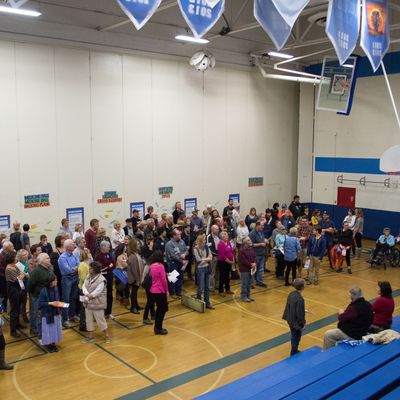
As shorthand many political observers refer to the presidential nominating process as “the primaries,” even though a significant number of states (most famously Iowa) have traditionally held mass-participation events called “caucuses” instead. But among Democrats, at least, talking about “the primaries” will be more accurate than ever in 2020 thanks to DNC rules changes that are leading many states – ten at the moment – to switch from caucuses to primaries. Geoffrey Skelley explains:
DNC delegate-selection rules now say that state parties should try to use government-run primaries if they are available. And if a state party doesn’t have that option, party-run events (including caucuses) are required to allow absentee or early voting and same-day voter registration, plus implement procedures for recounts. For a state such as Washington, which was by far the largest caucus state by population in 2016, it was much easier to meet these rule changes by using Washington’s government-run primary than by adapting its caucuses.
Broadening caucus participation is a reform that’s been in the air for a while, but it was pushed across the line by widespread complaints from Bernie Sanders’ 2016 campaign, particularly after the Iowa caucuses produced a razor-thin win for Hillary Clinton with no tabulation of raw presidential preference votes and no recount. Ironically, Sanders went on to win all of the caucuses in the ten states that are now switching to primaries, and he lost in both of the states that will still have them, Iowa and Nevada. These are states with deep caucus traditions (particularly in Iowa, where abandoning the caucuses is as unthinkable as disbanding the State Fair) who have gone to the trouble and expense of complying with the new rules.
Two other states that held caucuses in 2016 (Maine and Wyoming) haven’t decided on their plans. Most of the former caucus states are indeed shifting to government-sponsored primaries that are just like (or in some cases actually are part of) the nominating contests for Congress and state elected offices. Four states will hold party-sponsored primaries that tend to involve far fewer polling places and more restricted hours to hold down costs.
It’s unclear who if anyone the new primary-heavy schedule might help or hurt. Again, Bernie Sanders did well in most 2016 caucuses, but he has enough money and national support to compete under any format. In the past caucuses have most aided candidates who took advantage of them when rivals didn’t. Most notably, in 2008 Barack Obama swept caucus states that Hillary Clinton’s campaign unaccountably ignored, giving him, by most accounts, his ultimate margin of victory in total delegates.
The trend towards primaries probably will boost turnout, as Skelley notes:
One possible outcome of these changes is that we will likely see higher levels of voter participation because turnout tends to be higher in primaries than in caucuses. Caitlin Jewitt, a political scientist at Virginia Tech who has researched the effects of election rules on turnout in primaries and caucuses, told FiveThirtyEight that she believes moving to a primary system “could help turnout increase 17-18 percent.”
“The difference between having many hours [to vote] and having to show up on a Tuesday night [to caucus] is huge,” she said, and that increased flexibility helps draw in more voters.
You should remember that when pundits begin attributing higher turnout to Democratic voter enthusiasm, and predict good things for the Donkey Party in November. That may or may not be an accurate prophecy, but making it easier for people to participate in elections really does make a difference.






























